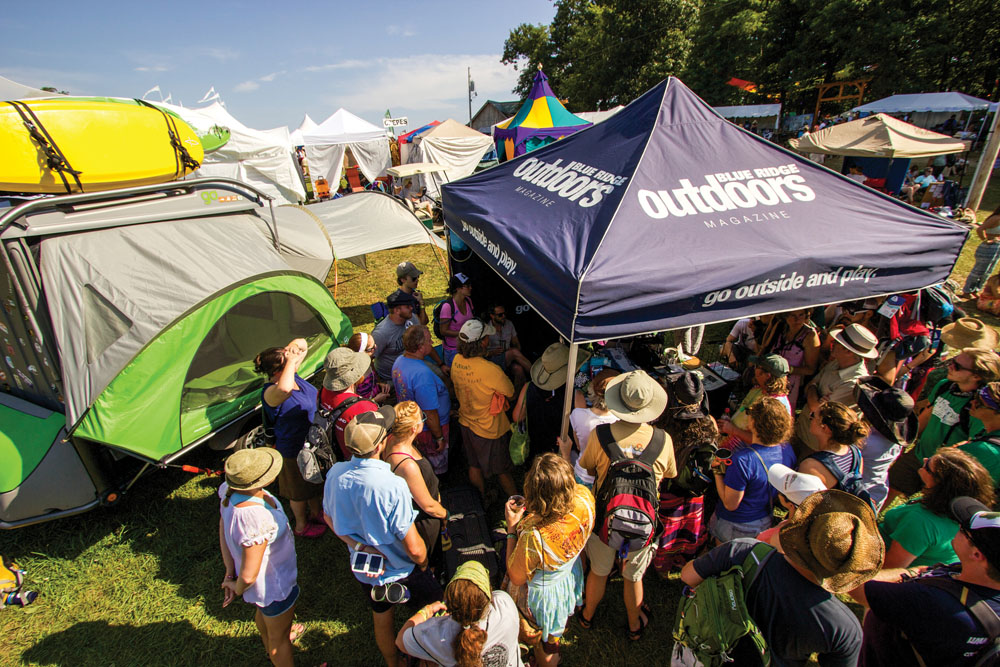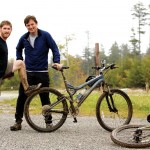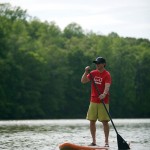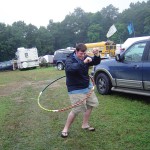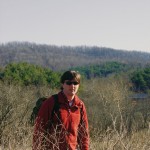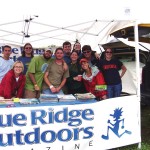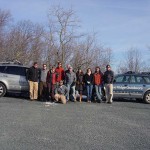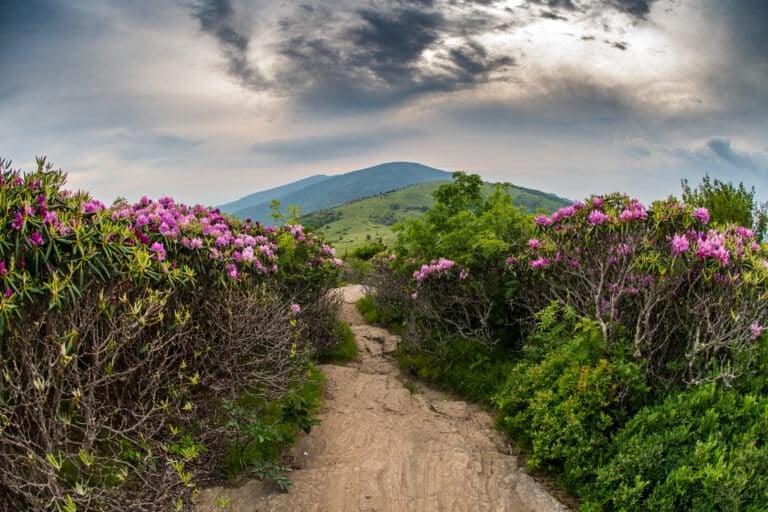“Who’s Blue Ridge Outdoors?”
A guy in jean cut-off shorts is standing next to me, shirtless, sweating in the late August heat and casually sipping out of a pint glass at Ocoee Fest. He’s barefoot and a little drunk—standard protocol for any kayaking festival.
“It’s a free regional magazine based out of Charlottesville, ” I begin, launching into my elevator speech on Blue Ridge Outdoors. As travel editor, I have answered this question hundreds of times before. Despite having had a few beers myself, I switch into cruise control and let my mouth do the talking while my brain reels in the shocking aftermath of his question.
For shame, I think to myself. How can you not know what Blue Ridge Outdoors is?!
Maybe he lives under a rock, I reason. He is a raft guide, after all. Even so, the river he works on, the Ocoee River, is in the heart of our coverage. His job, his passions, are our bread and butter. There is no excuse for this ignorance.
“Oh!” he says after my spiel is over. The light bulb comes on. His eyes widen and I feel a faint flicker of hope. “I bought my first backpack from you guys!”
Not quite.
Blue Ridge Mountain Sports, a Virginia-based outdoor outfitter, is what most newcomers to the magazine associate with when they hear “Blue Ridge Outdoors.”
I sigh, abandoning my disappointment in the raft guide’s failed realization. It’s not his fault. I hand him a sticker with our motto, “Go Outside and Play,” and a copy of the latest issue. He thanks me, raising his glass to the sky before taking a drink and rejoining the festivities. Later that night, I would see the same guy thrashing about in front of the stage, moving surprisingly in-rhythm with the band. When the music had stopped, he turned to leave and saw me near the middle of the pack.
“Hey!” he shouted. “It’s the chick from Blue Ridge Outdoors!”
Well, I thought, at least he remembered the magazine’s name.
He barreled through the crowd to give me a high five. The bumper sticker I’d given him earlier was slapped crookedly across his bare chest. I smiled. Mission accomplished.
SPEND YOUR MONEY ON SPORTS…WE’RE FREE.
Just two decades ago, I wouldn’t have been so surprised to learn that this raft guide from Tennessee was unfamiliar with the publication. In fact, 20 years ago, my job, and that of more than half the magazine’s present-day staff, wouldn’t have even existed.
Born in a windowless basement on 220 South Street in Charlottesville, Va., Blue Ridge Outdoors barely resembled the comprehensive regional publication it is today. Created by outdoor enthusiast John Blackburn, a graduate student at the University of Virginia and a contributing journalist for C-Ville Weekly, the early pages of BRO only covered Charlottesville-based adventures—directions to Blue Hole, best hikes in the Shenandoah National Park, how Devils Knob got its name. Everything was black and white, and the first three issues in 1995 were tucked neatly into the folds of C-Ville Weekly as a seasonal insert.
“Most business startups fail,” says Rob Jiranek, BRO’s first publisher and, at the time, publisher for C-Ville Weekly. “The chances of having a magazine actually succeed back then were about 1 in 11. It was like getting into Harvard.”
Despite the odds against them, Jiranek and Blackburn made the most of those early days and their five-person team. Just two years later, the magazine became a monthly, though its content remained limited to the mountains of Virginia.
“It was a real petri dish of outdoor creativity,” says Jiranek of the office dynamic.
With no budget for photography, Blackburn used his own pictures to accompany the stories, most of which he wrote himself. The staff at BRO sold ads by day, wrote stories at night, and somehow managed so scrape together an impressive issue each month. Part regional events calendar, part storytelling platform, the early issues of the magazine were characterized by witty writing and the authentic voices of writers who lived and breathed adventure in the Blue Ridge.
By 2001, the team decided to spread the magazine’s coverage farther south and open a North Carolina office in Asheville. The decision would mark an important turning point in the growth of the magazine, setting the stage for BRO to evolve as the region’s definitive resource for outdoor adventure.
A CHANGING LANDSCAPE
Will Harlan was the first employee hired at the new North Carolina office. A top trail runner and outdoor writer, he became the magazine’s editor-in-chief, a position he has held for the past 14 years. As BRO’s most senior staffer, Harlan has helped the magazine expand its content and reach.
“It’s a privilege working with this team. They are like family,” Harlan says. “The magazine has grown and evolved over the years, but we’ve always stayed true to our roots—edgy, original, authentic content.”
Travis Searcy, who was hired a few months after Harlan, knows all-too-well just how far the magazine has grown. Brought on as a graphic designer in the Charlottesville office, Searcy says the layout process, called a “paste-up,” didn’t use PDFs or Adobe design software—all he needed was a printer, some scissors, and a little glue.
“I would literally paste the ads onto the pages, then we’d mail that to the press, they’d photograph it, make plates, then print the magazine,” Searcy says.
The layout process wasn’t the only thing that evolved. Steven McBride, a North Carolina-based photographer who has published the most BRO covers, remembers when he used to FedEx transparency slides to Harlan for cover photo submissions.
“Back in the film days, everything was different,” McBride says. “Cameras were bigger and heavier. Lighting was harder to deal with. Photoshop back then was barely in existence.”
But what BRO lacked in production resources, it made up for ten-fold in its unquestionable commitment to providing quality content. The magazine flourished. As the years passed, technology improved seemingly overnight, website redesigns came and went, and distribution doubled. By the time the magazine’s future owner, Blake DeMaso, got his hands on BRO, the publication had extended its editorial content to include adventures as far south as Georgia all the way up through West Virginia.
“I love the mountains and I love the Blue Ridge. It’s where I grew up,” DeMaso says. “I identified with the magazine from day one.”
The year was 2003 and DeMaso, having worked for several years in publishing for Condé Nast, was ready for a change in pace. He approached Jiranek near the end of the year about possibly becoming a business partner, and ended up with more than he bargained for. By March of 2004, DeMaso was the new owner of BRO.
“I was only 30 years old, and I was very scared,” DeMaso remembers. “I was now in charge of a monthly magazine, a website that was six months out-of-date, five employees in Charlottesville, three in North Carolina, eight computers, a copier machine, a fax machine that didn’t really work, and a ping pong table.”
But, really, what more do you need?
PLAY HARD, WORK HARD
The Charlottesville BRO headquarters fit in one room. Located in a basement, the place had shoddy Internet and a drafty window. In the winter, staff wore fingerless gloves to keep their hands warm while they worked.
“I used a desk made out of cardboard boxes for at least three months,” DeMaso says.
With a ping-pong table in the middle of the room, a dartboard on the wall, and a regular littering of broken rubber bands on the floor from the daily rubber band wars, the first BRO office looked less like a magazine headquarters and more like a frat house.
But when you play hard, you work hard, too. Thanks to the early efforts of a passionate group of people, the magazine is now distributed from Atlanta to Baltimore and covers adventures from Kentucky to the coast. Not long after DeMaso took over, the staff doubled in size, the magazine became full-color throughout, it expanded its page counts, added a glossy cover, and revamped its logo. The best part? It remained a free publication.
“The goal from day one was always to provide free information to inspire people to go outside,” DeMaso says. “I think our goal will never change.”
The stories that fill the magazine’s pages now reach over 300,000 readers every month. The advent of social media platforms brought new ways of engaging an ever-expanding audience and sharing news in real time. The magazine’s presence at regional events swelled to over 30 in a season with regular co-hosting of other races, music festivals, and events across the Southeast and Mid-Atlantic.
Yet despite the changes, at its core, Blue Ridge Outdoors remains dedicated to the founding principle of the passion project that Jiranek and Blackburn gave life to: the idea that the great outdoors encompasses more than just the places where we play—they represent a way of living, a story worth telling, an environment in need of protecting, and a wildness within that we all are preserving.
